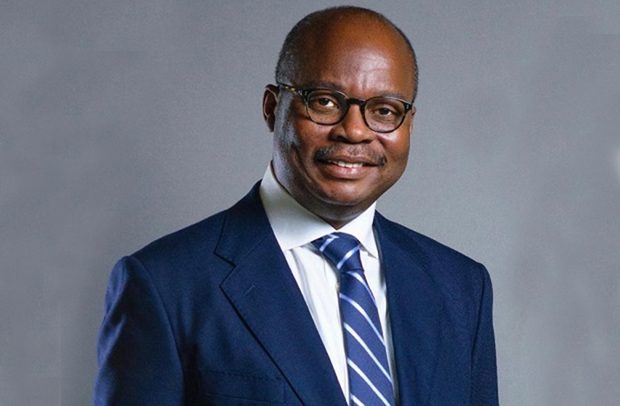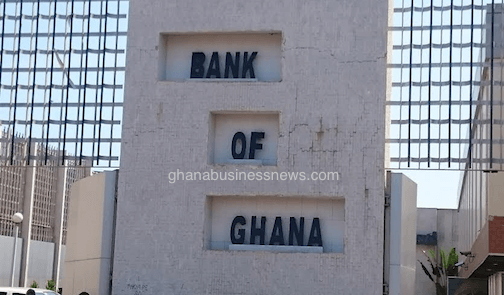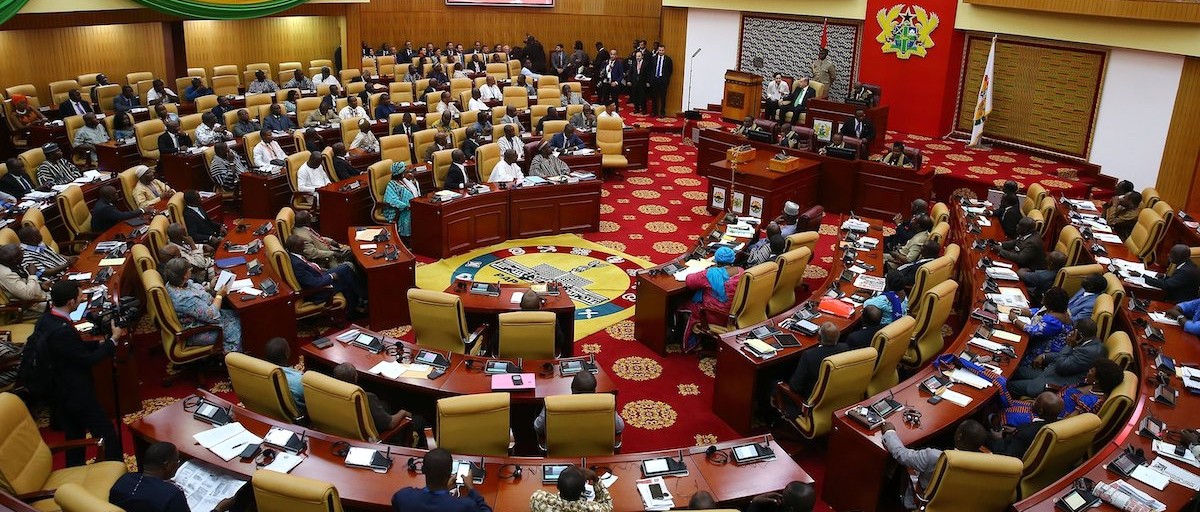
Bank of Ghana’s Monetary Policy Committee has kept its key lending rate unchanged at 16 percent.
Speaking to the media at a news conference Friday, Governor of the Bank Of Ghana, Dr. Enerst Adisson said this was due to the fact that some marginal threats still remain and the outlook for the economy was quite favourable , hence the decision to hold the rate.
He added that he expects the finance minister to use the Mid-year review to deal with some challenges with revenue.
Read full statement from the MPC meeting
1. Good afternoon and welcome to the 89th MPC press briefing. The MPC met during the week to deliberate on recent global and domestic economic developments. We present highlights of the discussions and subsequent positioning of the monetary policy rate.
2. Since the May 2019 MPC meeting, global growth momentum has continued to decline, reflecting heightened policy uncertainty on a number of issues, including escalated trade tensions between the US and China, unresolved Brexit negotiations, and geopolitical tensions. In emerging market and developing economies, growth broadly weakened, influenced largely by the slowdown in global trade and concerns on the back of the on-going US-China trade tensions.
3. Inflationary pressures in advanced economies, including Ghana’s key trading partners, remain relatively subdued as a result of low energy prices and sluggish wage growth, despite the tightening of labour markets. Across emerging market and developing economies, the recent drop in oil prices have contributed to subdued inflation pressures. In the outlook, inflation is forecast to remain stable in advanced economies due to the expected moderation in global growth, relatively anchored inflation expectations, and moderate wage growth. The expected drop in oil prices and dovish shift in central bank forward guidance in most advanced economies are expected to keep interest rates low and support growth over the medium term.
4. Global financing conditions, on the other hand, have eased somewhat due to prospects of anticipated cuts in the US Fed rate in 2 the second half of the year, and the general accommodative monetary policy stance across most advanced economies. Accordingly, global interest rates are likely to remain broadly unchanged and in some cases decline and support a reverse-flow of capital to emerging markets and frontier economies with strong fundamentals, and also limit the risk of sudden portfolio reversals from emerging market and developing economies.
5. The momentum in domestic economic activity continued to pick up, evidenced by the latest growth estimates released by the Ghana Statistical Service. The first quarter GDP annual growth was estimated at 6.7 percent compared with 5.4 percent in the same period of last year. Non-oil growth was strong at 6.0 percent, up from 4.2 percent recorded for the corresponding period of 2018. The growth outturn was driven by a strong recovery in the services sector which grew by 7.2 percent compared with 1.2 percent in 2018.
6. The Bank’s updated Composite Index of Economic Activity (CIEA) also reflected strong uptick in economic activity. The updated CIEA recorded a growth of 3.2 percent year-on-year in May 2019, compared with a 2.2 percent growth during the same period last year. Consumer confidence also picked up significantly reflecting optimism about current and future economic conditions, while business sentiments softened somewhat.
7. Headline inflation has trended downwards since April 2019 after three consecutive price increases on the back of exchange rate pass-through effects. From 9.5 percent in April, inflation declined to 9.4 percent in May, and further to 9.1 percent in June. Underlying inflation also trended downwards as the Bank’s main measure of core inflation (inflation excluding fuel and utilities prices) eased in June 2019.
8. The country’s three main export commodities — oil, gold and cocoa— traded mixed in June 2019. Crude oil prices rebounded during the first five months as production cuts coupled with renewed geopolitical tensions lifted prices. However, prices have since 3 moderated to an average of US$63.1 per barrel in June, down from an average of US$71.0 per barrel. On the other hand, gold prices made significant gains as the US-China trade tensions heightened. Gold prices rallied to a six-year high average of US$1,359.7 per fine ounce in June 2019. Prices of cocoa bounced back in June, driven by supply constraints. The recent move by Cote d’Ivoire and Ghana to set a floor price for cocoa also supported the price rally. Cocoa prices averaged US$2,467.1 per tonne in June.
9. Consequently, export receipts for the first half year remained robust at nearly US$8.0 billion and together with a relatively lower import bill, positively impacted on the trade account. Provisional trade balance for the first half of 2019 recorded a surplus of US$1.9 billion (2.8% of GDP), compared to a surplus of US$1.3 billion (1.9% of GDP) in the first half of 2018.
10. The trade surplus was partly offset by net outflows in the services and income accounts, leading to a marginal current account surplus of US$39 million (0.1% of GDP) in the first half of 2019 compared to a deficit of US$409 million (0.6% of GDP) in the same period last year. The current account surplus, though marginal, is the first in recent history. This surplus, together with significant inflows to the capital and financial account, yielded an overall balance of payments surplus of US$1.3 billion (1.9% of GDP) over the review period, compared with a deficit of US$372 million (0.6% of GDP) last year.
11. Gross International Reserves (GIR) stood at US$8.6 billion (equivalent to 4.3 months of import cover) at the end of June 2019 up from US$7.0 billion (equivalent to 3.6 months of import cover) at the end of December 2018.
12. The domestic currency market has remained relatively calm. The Ghana Cedi cumulatively depreciated by 8.2 percent in the year to July 18, 2019, compared with 5.8 percent for the corresponding period of 2018. Against the British pound and Euro, the Ghana cedi cumulatively depreciated by 5.9 percent and 6.5 percent respectively, compared with 2.5 percent and 2.9 percent depreciation respectively over the same corresponding period. In 4 trade-weighted terms, the real effective exchange rate continued to be broadly aligned with the underlying fundamentals.
13. Provisional data for the first five months of 2019, showed an overall budget deficit (on cash basis) of 3.0 percent of GDP against the target of 2.4 percent of GDP. This excludes some legacy energyrelated payments of about 0.7 percent of GDP The higher-thanprojected fiscal deficit outturn was primarily driven by lower-thanexpected revenues outturn against increased pace of spending. The revenue shortfalls were mainly from international trade taxes. Over the review period, total revenue and grants amounted to GH¢18.5 billion compared to a programmed target of GH¢21.5 billion, indicating an annual growth of 7.6 percent. Total expenditures however reached GH¢28.6 billion, marginally below the target of GH¢29.7 billion, and representing 25.2 percent annual growth.
14. In line with the above developments, the stock of public debt rose to 58.1 percent of GDP (GH¢200.0 billion) at the end of May 2019 compared with 51.0 percent of GDP (GH¢153.4 billion) at the end of May 2018. Of the total debt stock, domestic debt was GH¢94.6 billion (27.5% of GDP), of which GH¢11.0 billion (or 3.2% of GDP) represented bonds issued to support the financial sector clean-up while external debt was GH¢105.4 billion (30.6% of GDP).
15. The key monetary aggregates broadly reflected some growth in line with continued expansion of economic activity. Annual growth in broad money supply (M2+) was 22.3 percent in June 2019 compared with 13.0 percent in the same period last year. The growth in total liquidity was supported by increases in both Net Domestic Assets and Net Foreign Assets of the banking system. The pace of growth in Reserve Money however slowed to 8.8 percent on a year-on-year basis in June 2019 compared with 13.9 percent growth in the same period a year earlier.
16. Private sector credit growth continued to strengthen, supported largely by the well-capitalized banking sector. Annual growth in private sector credit went up by 19.8 percent in April 2019, 5 compared with 5.6 percent growth in the same period of 2018. In real terms, private sector credit expanded by 7.1 percent.
17. Money market interest rates on Government securities reflected mixed trends, edging up in short-dated instruments and moderating marginally in some long-dated instruments. Over the first half year, the 91-day Treasury bill rate rose to 14.8 percent in June 2019 from 14.6 percent in December 2018. Similarly, the rate on the 182-day bills also increased to 15.2 percent from 15.0 percent for the comparative period. On the secondary bond market, yields on Government’s 7-year, 10-year, and 15-year bonds moderated indicating favourable long-term inflation expectations.
18. The weighted average interbank lending rate, which shows the rate at which commercial banks lend to each other, also declined to 15.2 percent in June 2019 from 16.1 percent. Average lending rates of banks however edged up marginally to 27.7 percent from 26.9 percent over the same comparative period, and in line with increasing rates on short-term instruments.
19. The financial sector reform has continued with the recent revocation of licenses of 347 insolvent Microfinance companies and 39 insolvent Microcredit companies. The receivership and liquidation of these institutions are in progress and depositors’ claims are being validated and paid.
20. The banking sector reforms continue to yield results. Provisional data available through the year to June 2019, shows that the banking sector is well-capitalised, solvent, liquid and profitable with improved Financial Soundness Indicators. At the end of June 2019, banks’ total assets amounted to GH¢112.8 billion, representing an annual growth of 12.5 percent. The increase in total assets was funded mainly from deposits which recorded a strong growth of 22.3 percent year-on-year. The industry’s Capital Adequacy Ratio (CAR) was estimated at 19.1 percent, significantly higher than the statutory minimum of 10.0 percent. The average industry CAR was 16.3 percent when computed in accordance with the new Bank of Ghana Capital Requirement Directive (CRD) under the Basel II/III capital framework.
21. Asset quality has improved significantly in the banking sector, on the back of write-offs and loan recoveries. The Non-Performing Loans (NPL) ratio has declined from 22.6 percent in June 2018 to 18.1 percent in June 2019. Though still high, the recent decline is in the right direction and banks are still working to intensify their credit risk management practices and loan recovery efforts. Summary and Conclusions
22. In sum, global growth momentum has continued to soften, and it is expected to remain weak into the second half of the year. This, together with relatively subdued inflation, has prompted most central banks to signal more accommodative monetary policy stance in the near-term. Subsequently, it is expected that global financing conditions would remain supportive for both emerging market and frontier economies with strong fundamentals. These developments should help support a stable currency and dampen inflationary pressures going forward. However, uncertainties surrounding increasing trade and geopolitical tensions in the global outlook may require some monitoring.
23. On the domestic front, economic activity remains strong and broadbased. Although there are some downside risks to growth, mainly from subdued business sentiments and increase in utility tariffs, growth is expected to remain robust in the second half of the year. The medium-term outlook for the real sector is positive based on improving consumer sentiments and continued recovery in private sector credit growth.
24. The strong external payments position witnessed in the last 24 months continued in the first half of the year. Both the trade and current account recorded surpluses. These, together with improvements in the capital and financial account, translated into a slight build up in reserves in the first half of the year, supporting the local currency market, as the cedi remained relatively stable in the second quarter.
25. The Committee however, observed that the pace of fiscal consolidation has slowed down, mainly reflecting gaps in revenue mobilization while the pace of spending has increased. This could pose risks to macroeconomic stability if not addressed. The Committee therefore expects that some corrective measures will be announced in the mid-year budget review. This should help address the financing gap challenges as well as manage the risks from the large unbudgeted energy sector related payments that could adversely impact foreign exchange reserves and undermine the macro stability gains made so far.
26. The Committee however, noted that while these risks remain, the Bank’s core mandate of price stability appears to be on track. Inflation has remained within the target band in the last 15 months. The Committee assessed that the pass-through from exchange rate depreciation is waning and the underlying inflationary pressures as well as inflation expectations are well-anchored.
27. Under the circumstances, the Monetary Policy Committee decided to maintain the policy rate at 16 percent. Information Note 8 The next Monetary Policy Committee (MPC) meeting is scheduled for September 17-19, 2019. The meeting will conclude on Friday, September 20, 2019 with the announcement of the policy decision.
Read Full Story

















Facebook
Twitter
Pinterest
Instagram
Google+
YouTube
LinkedIn
RSS